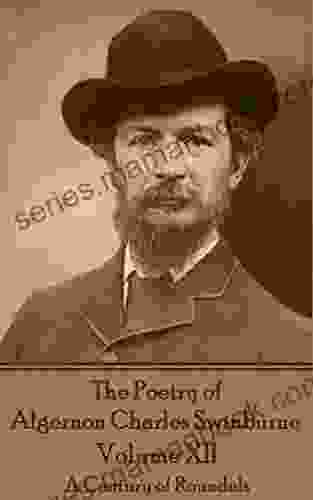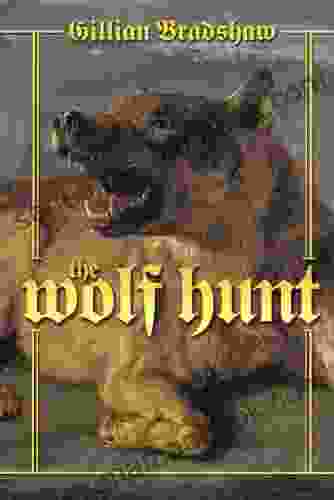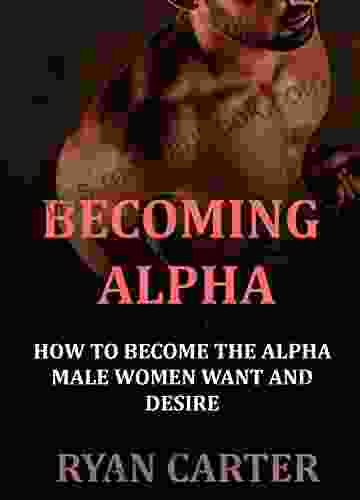A Century of Roundels: Exploring the Enduring Charm of a Poetic Form

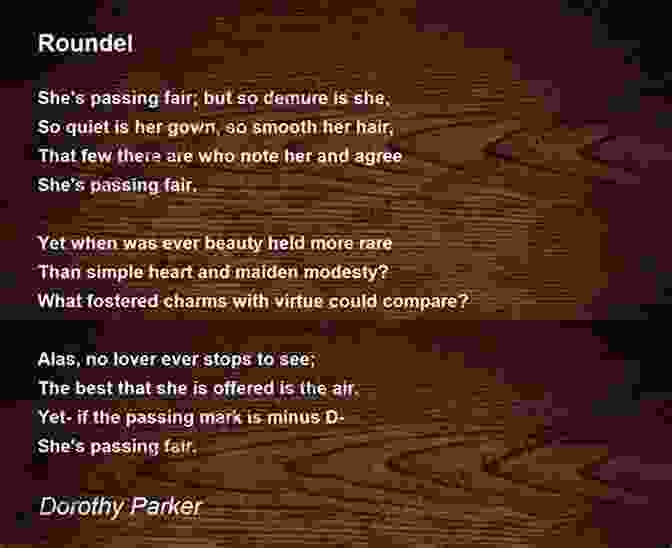
In the vast tapestry of poetic forms, the roundel stands out as a unique and captivating creation. With its distinctive circular structure and lyrical flow, the roundel has captured the hearts of readers and writers alike for centuries. This article delves into the rich history, characteristics, and enduring allure of the roundel, showcasing its versatility and timeless appeal.
4.5 out of 5
| Language | : | English |
| File size | : | 103 KB |
| Text-to-Speech | : | Enabled |
| Screen Reader | : | Supported |
| Enhanced typesetting | : | Enabled |
| Word Wise | : | Enabled |
| Print length | : | 82 pages |
The Origins of the Roundel
The roundel's literary lineage can be traced back to medieval France in the 13th century. It emerged as a variant of the virelai, a highly structured verse form popular with troubadours. The earliest known roundels were composed by Adam de la Halle, a French trouvère, in the late 13th century.
Over time, the roundel spread to England, where it gained popularity among poets of the 14th and 15th centuries, including Geoffrey Chaucer and John Lydgate. By the 16th century, the roundel had become a well-established poetic form, embraced by poets such as Edmund Spenser and William Shakespeare.
The Roundel's Structure
The roundel is characterized by its intricate circular structure. It consists of three stanzas of eight lines each (known as a "trio") and a final stanza of four lines (known as a "quatrain"). The opening two lines of the trio are repeated as the refrain in the third stanza and the final two lines of the trio are repeated as the refrain in the quatrain.
This repeating pattern creates a cyclical effect, giving the roundel its distinctive sense of unity and completeness. The following is an example of a classic roundel:
Of all the joys that bless our life, The sweetest joys of all, Are those that come with little strife, And make us feel so small. Of all the joys that bless our life, Are those that come without a knife, And gently lift us from the fall, Of all the joys that bless our life. With love's soft touch, and nature's grace, We find a haven from the race, Of all the joys that bless our life.Characteristics of the Roundel
Beyond its structure, the roundel is also distinguished by several key characteristics:
- Musicality: The roundel's circular repetition and lyrical flow lend it a natural musicality. Many roundels have been set to music, further enhancing their charm.
- Conciseness: Despite its three-stanza structure, the roundel is a relatively concise poetic form. This brevity forces poets to craft their language with precision and economy.
- Lyrical Quality: The roundel's circular structure creates a sense of unbroken melody, giving it a lyrical quality that makes it well-suited for expressing emotions and personal experiences.
Thematic Range of the Roundel
The roundel has proven to be a versatile poetic form, capable of expressing a wide range of themes and emotions. From love and joy to nature and mortality, poets have used the roundel to explore a multitude of subjects.
The roundel's concise structure makes it particularly effective for capturing brief moments, impressions, or reflections. It is often used to convey a single idea or emotion in a concentrated and memorable way.
Contemporary Use of the Roundel
Despite its medieval origins, the roundel remains a popular poetic form today. Contemporary poets continue to embrace its unique structure and expressive potential.
In the 20th century, poets such as Ezra Pound, T.S. Eliot, and W.H. Auden experimented with the roundel, using it to explore modern themes and techniques. In recent years, a renewed interest in the roundel has emerged, with poets such as Billy Collins and Gregory Orr writing innovative and compelling roundels.
From its humble beginnings in medieval France to its enduring presence in contemporary literature, the roundel has proven to be a timeless poetic form. Its circular structure, lyrical flow, and concise nature make it an ideal vehicle for expressing a wide range of emotions and experiences.
As we enter a new century of literary craftsmanship, the roundel stands as a testament to the enduring power of poetic form. It is a testament to the human desire to create beauty and meaning through language, and it continues to inspire and captivate readers and writers alike.
4.5 out of 5
| Language | : | English |
| File size | : | 103 KB |
| Text-to-Speech | : | Enabled |
| Screen Reader | : | Supported |
| Enhanced typesetting | : | Enabled |
| Word Wise | : | Enabled |
| Print length | : | 82 pages |
Do you want to contribute by writing guest posts on this blog?
Please contact us and send us a resume of previous articles that you have written.
 Top Book
Top Book Novel
Novel Fiction
Fiction Nonfiction
Nonfiction Literature
Literature Paperback
Paperback Hardcover
Hardcover E-book
E-book Audiobook
Audiobook Bestseller
Bestseller Classic
Classic Mystery
Mystery Thriller
Thriller Romance
Romance Fantasy
Fantasy Science Fiction
Science Fiction Biography
Biography Memoir
Memoir Autobiography
Autobiography Poetry
Poetry Drama
Drama Historical Fiction
Historical Fiction Self-help
Self-help Young Adult
Young Adult Childrens Books
Childrens Books Graphic Novel
Graphic Novel Anthology
Anthology Series
Series Encyclopedia
Encyclopedia Reference
Reference Guidebook
Guidebook Textbook
Textbook Workbook
Workbook Journal
Journal Diary
Diary Manuscript
Manuscript Folio
Folio Pulp Fiction
Pulp Fiction Short Stories
Short Stories Fairy Tales
Fairy Tales Fables
Fables Mythology
Mythology Philosophy
Philosophy Religion
Religion Spirituality
Spirituality Essays
Essays Critique
Critique Commentary
Commentary Glossary
Glossary Bibliography
Bibliography Index
Index Table of Contents
Table of Contents Preface
Preface Introduction
Introduction Foreword
Foreword Afterword
Afterword Appendices
Appendices Annotations
Annotations Footnotes
Footnotes Epilogue
Epilogue Prologue
Prologue Joanne Kyger
Joanne Kyger Auston King
Auston King Melinda R Cordell
Melinda R Cordell Joel Backaler
Joel Backaler C J Cherryh
C J Cherryh Tavis Smiley
Tavis Smiley Tom Burgis
Tom Burgis Lena Little
Lena Little David Wray
David Wray Amy Astley
Amy Astley Brett Russo
Brett Russo Cecil Castellucci
Cecil Castellucci Stephan Weaver
Stephan Weaver David North
David North Betina Krahn
Betina Krahn W Chan Kim
W Chan Kim Brian Shaw
Brian Shaw Allison Paolini
Allison Paolini Christina Van Deventer
Christina Van Deventer Katalina Rourke
Katalina Rourke
Light bulbAdvertise smarter! Our strategic ad space ensures maximum exposure. Reserve your spot today!

 Thomas PynchonEasy Grow 123 Abc Cannabis Manual: A Comprehensive Guide to Growing Marijuana
Thomas PynchonEasy Grow 123 Abc Cannabis Manual: A Comprehensive Guide to Growing Marijuana
 Federico García LorcaBehind the Smokescreen of Official Mandates: Exposing the Hidden Agendas
Federico García LorcaBehind the Smokescreen of Official Mandates: Exposing the Hidden Agendas Kelly BlairFollow ·12.7k
Kelly BlairFollow ·12.7k Darren NelsonFollow ·10.5k
Darren NelsonFollow ·10.5k Julio Ramón RibeyroFollow ·12.5k
Julio Ramón RibeyroFollow ·12.5k Boris PasternakFollow ·14.3k
Boris PasternakFollow ·14.3k Tyrone PowellFollow ·3.4k
Tyrone PowellFollow ·3.4k Wesley ReedFollow ·14.2k
Wesley ReedFollow ·14.2k Isaac BellFollow ·4.7k
Isaac BellFollow ·4.7k Eric NelsonFollow ·8.7k
Eric NelsonFollow ·8.7k
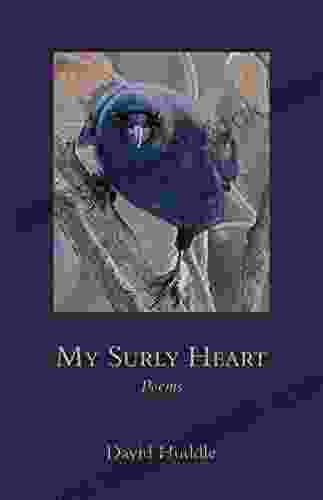
 David Mitchell
David MitchellMy Surly Heart: Poetic Expressions of Unrequited Love...
In the annals of...

 Jake Carter
Jake CarterBleach Vol. 50: The Six Fullbringers - A Comprehensive...
Bleach Vol. 50, titled "The Six...
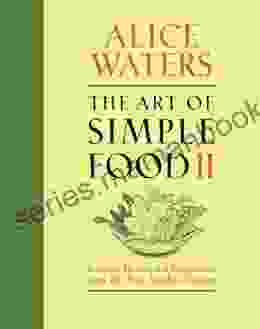
 Edward Reed
Edward ReedThe Art of Simple Food II: A Masterclass in Culinary...
In an era of culinary excess, where meals...

 Jarrett Blair
Jarrett BlairThe Easy Ingredient Ketogenic Diet Cookbook: Your Gateway...
The ketogenic diet,...
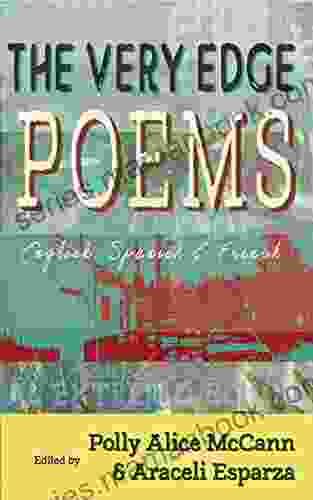
 Larry Reed
Larry ReedThe Very Edge Poems Polly Alice Mccann: A Poetic...
An to 'The Very...
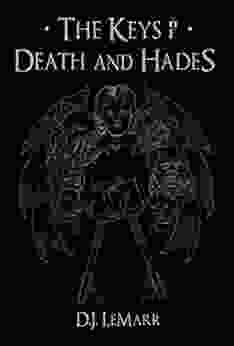
 Sidney Cox
Sidney CoxThe Keys of Death and Hades: Unlocking the Epic of...
In the realm of mythology...
4.5 out of 5
| Language | : | English |
| File size | : | 103 KB |
| Text-to-Speech | : | Enabled |
| Screen Reader | : | Supported |
| Enhanced typesetting | : | Enabled |
| Word Wise | : | Enabled |
| Print length | : | 82 pages |


